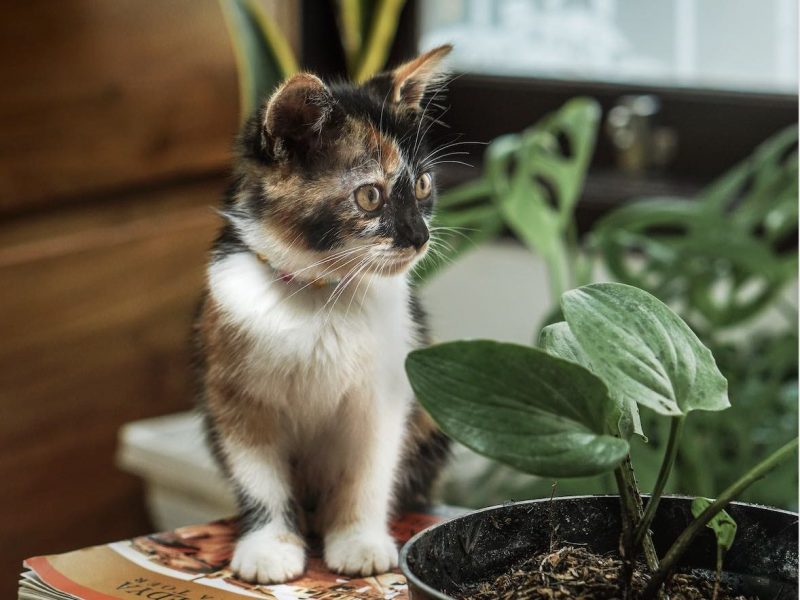
Non-Toxic Houseplants that are Safe for Cats
There are few things in this world that we love more than our pets, so it’s really important that we choose houseplants that are safe for them to be around. A lot of houseplants have toxic leaves or sap which means when ingested, can cause severe problems for your cat. Other houseplants have sharp leaf tips or spines that can hurt your cat if they get too close.
With dogs and other pets, we can often just raise the plants up on shelves or out of reach so they can’t get to them. However, cats can literally get everywhere in your home so it’s better not to risk having any toxic plants around if your cat is sometimes tempted to nibble on the leaves.
Below you’ll find our list of the top cat friendly houseplants so you don’t need to worry about a thing!
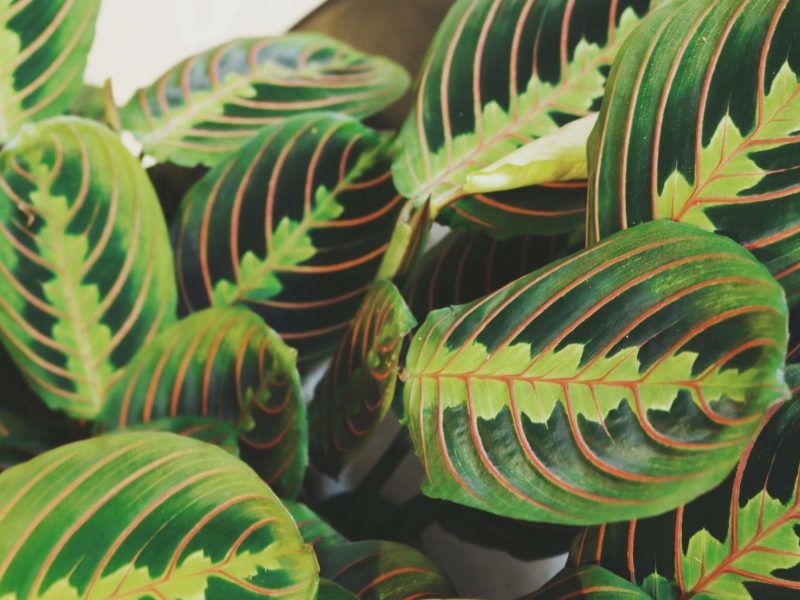
Prayer Plant
Maranta leuconeura
Native to the tropical rainforests of Brazil, the Prayer Plant is loved for its variegated leaves with intricate vein patterns. You can easily spot a Prayer Plant by its leaf undersides as shades of deep red are revealed when the plant’s leaves curl up at night, bringing a splash of colour to your home.
There are several varieties of Prayer Plants that all look ever so slightly different, all of which are safe for cats. The most common is the tri-colour which has red-veined leaves but you’ll sometimes see varieties with silver patches or dark green splashes. Prayer Plants are a little fussy though with light conditions, soil moisture and humidity levels though so we don’t recommend this as a starter plant, unfortunately.
Find out more in our Prayer Plant care guide.
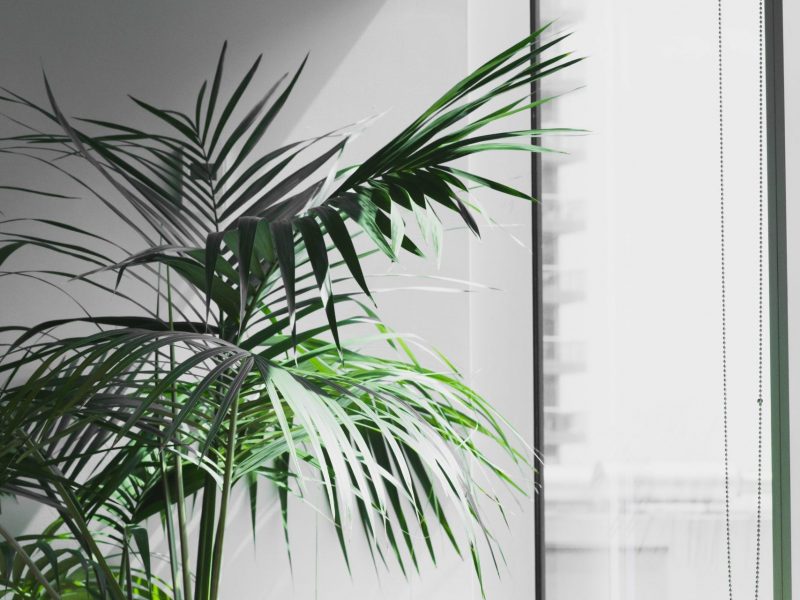
Kentia Palm
Howea forsteriana
Kentia Palms are pretty hardy plants that can stand environments that many other houseplants wouldn’t be able to, making them quite easy to care for. They can grow up to 40 feet outdoors but will rarely get over 13 feet when kept indoors.
They can be quite fussy about watering however and prefer to get little and often as this stops their soil from drying out completely or being soggy for longer periods of time. They also aren’t great with having dusty leaves, so we recommend wiping them down with a damp cloth every now and then to keep them clean.
The good news is they are safe for cats, as well as other plants and humans too!
Find out more in our Kentia Palm care guide.
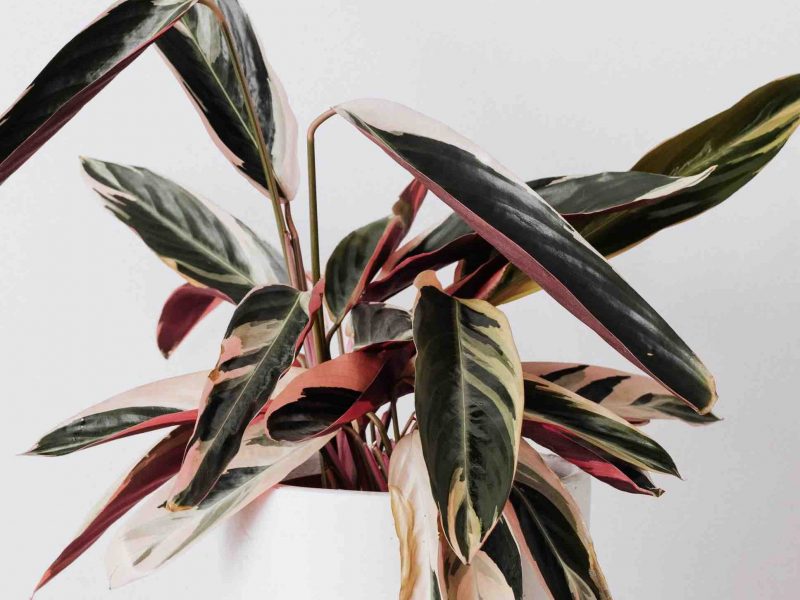
Calathea Triostar
Stromanthe Sanguinea
Part of the Prayer Plant family, Calathea Triostar plants are loved for their incredible white, green and pink leaves. Their vibrant pink leaf undersides really make this plant stand out in a crowd.
As much as we love the Calathea Triostar, they are a little fussy so be prepared for a bit of a challenge to keep this one alive and happy. They hate direct sunlight as it can very quickly burn and scorch the leaves. It’s also important that you keep a good level of moisture in the soil, not too much and not too little. The best thing about Calathea Triostars (apart from being cat safe of course) is how quickly they do grow once you get the environment and care just right. Before you know it, there will be new leaves and stems popping up everywhere which makes it a great plant to propagate!
Find out more in our Calathea Triostar care guide.
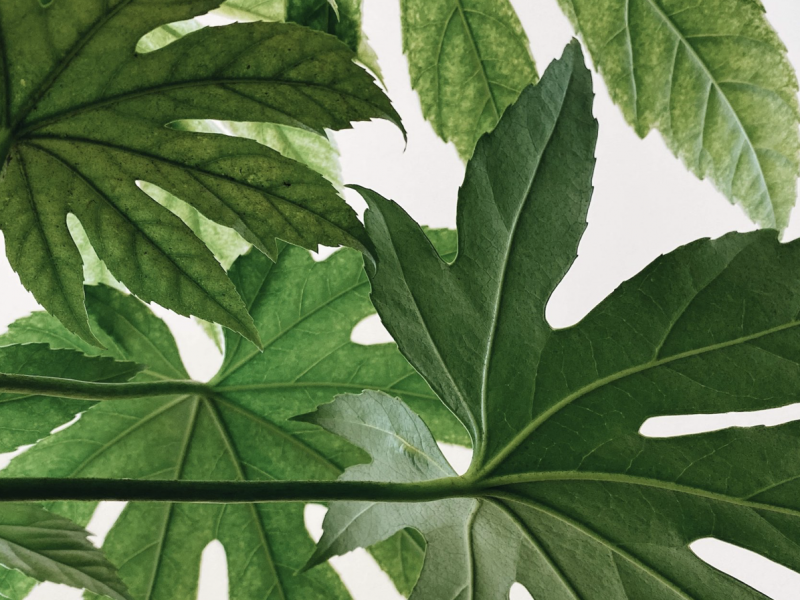
Money Tree
pachira aquatica
The Money Tree is a great tropical looking houseplant, that is actually super easy to care for and can live for 10-15 years if properly maintained. They originate from Mexico but are very common throughout the world due to their ease of care, in their natural habitats they can grow all the way to 18 meters tall!
One of the great things about the Money Tree is that they can adapt to fluorescent lighting, this makes them great for offices or other commercial spaces. With them also being cat safe and simple to keep happy, we think they are a greater starter plant for budding plant parents.
Find out more in our Money Tree care guide.
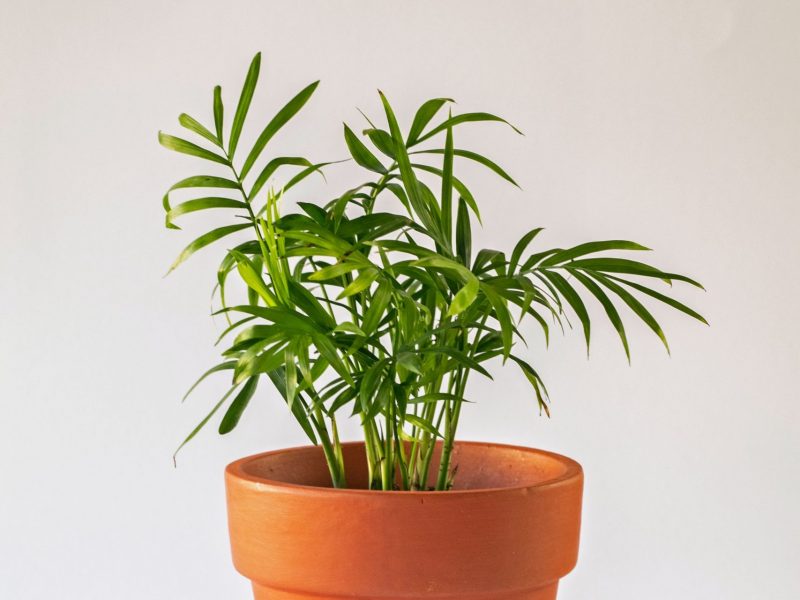
Parlour Palm
Chamaedorea elegans
If you want to grow a palm tree indoors then the Parlour Palm is the one you need! They are easy to care for, are non-toxic to your cats and other pets and adapt well to lower light conditions. When kept indoors the Parlour Palm will stay quite small growing to a maximum of around 8 feet, this makes them manageable and easy to place anywhere in the home.
Provided with good light and some additional humidity in the dryer months your Parlour Palm will be perfectly happy – don’t be discouraged by slow growth as they can take several years to grow an extra 2 feet in height.
Find out more in our Parlour Palm care guide.
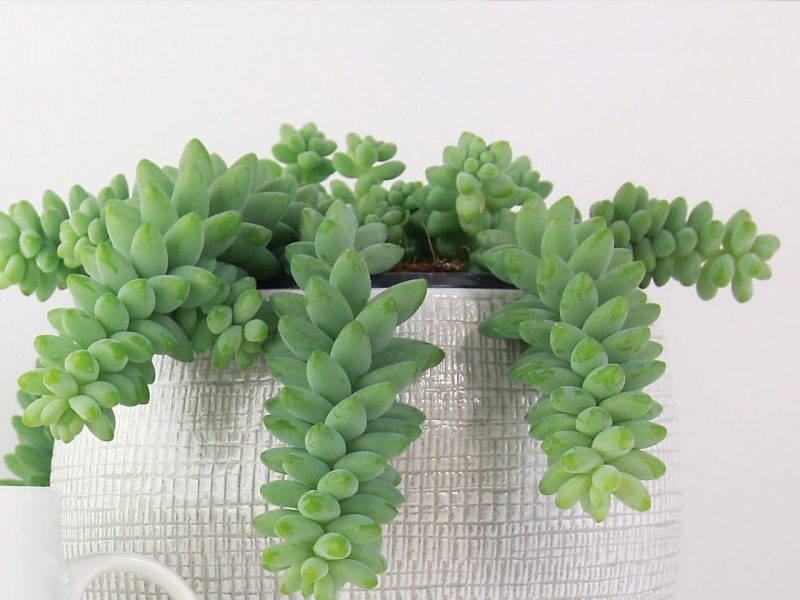
Burro's Tail
Sedum morganianum
Also known as the Donkey’s Tail Plant, these striking succulents are loved for their delicate leaves that dramatically cascade out of the pot. Native to Mexico and Honduras, they are forgiving to the forgetful waterer as they store water in their leaves (this also makes them quite sensitive to overwatering so be mindful about that) and just need a nice warm sunny spot to be happy!
Their easy care routine does come at a cost, however, as the Burro’s Tail grows pretty slowly throughout the year. Their stems can often reach around 20-25 inches but it’s really important to handle the Burros Tail plant carefully as the stems break off with just the slightest touch. Luckily they enjoy being root-bound so you shouldn’t have to repot it very often and you can really easily propagate any stems or leaves that fall off. Not only are they safe for pets, but they aren’t harmful to humans either so great for homes with small children as you don’t need to worry about keeping it out of reach.
Find out more in our Burro's Tail care guide.

Rattlesnake Plant
Calathea Lancifolia
Over the past few years, Rattlesnake Plants have gone from being quite rare to being one of the most popular Calathea plants around… and we totally understand why! Not only do they have über-cool markings on their long thin leaves, but they are quite an easy plant to take care of.
Native to the Brazilian rainforests, Rattlesnake Plants can adapt to a range of light levels, making them a great choice for those looking for a low-light plant. They also don’t need that much water as their roots absolutely hate sitting in waterlogged soil. The one thing you do need to make sure you do when caring for a Rattlesnake Plant is to boost the humidity either by misting the leaves or by using a humidifier. Although the name might make them sound quite dangerous, they are actually totally safe for cats!
Find out more in our Rattlesnake Plant care guide.
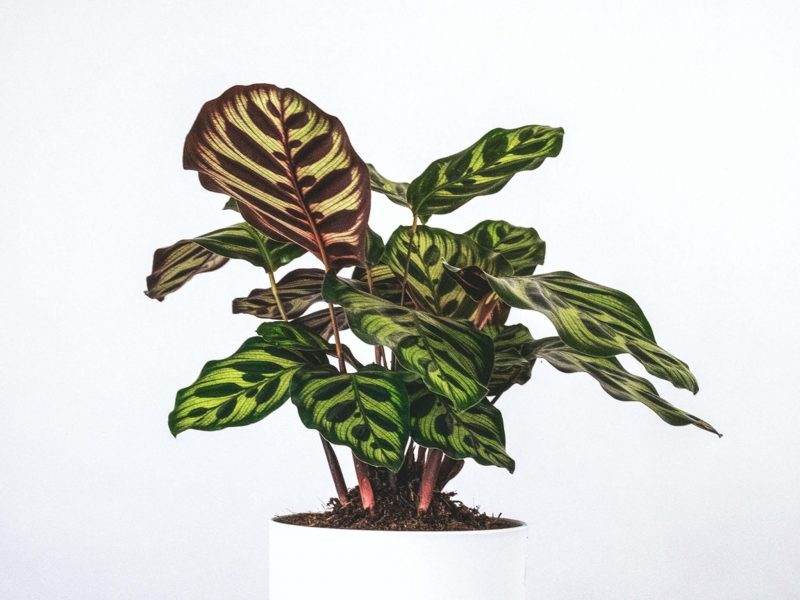
Peacock Plant
Calathea makoyana
The Calathea makoyana is known and loved for the bold and unique markings on the leaves, as well as their red undersides, a classic trademark of many Calathea plants. Peacock plants don’t grow very tall so are perfect for smaller homes and spaces.
When it comes to care, it’s important to note that the Peacock Plant can be a little temperamental sometimes, so we don’t always recommend this one to plant beginners. You must keep them away from direct light, mist them to boost the humidity and never let them fully dry out for long periods of time. They also need quite warm temperatures to really thrive, so drafts and AC vents are a no-go for Peacock Plants.
Peacock Plants can grow very small white flowers sometimes, but don’t think you aren’t caring for your plant properly if it doesn’t bloom. Flowers are quite rare and unpredictable, but a nice surprise when it does happen!
Find out more in our Peacock Plant care guide.
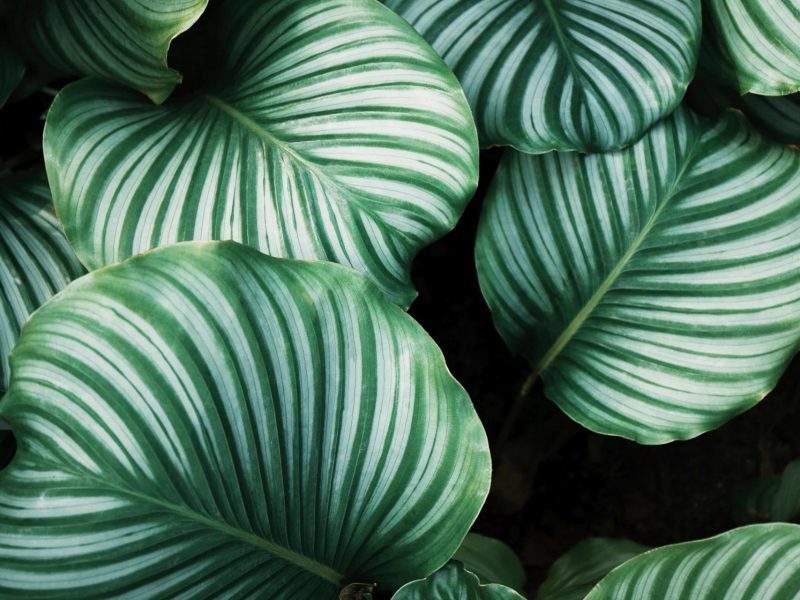
Calathea Orbifolia
Calathea Orbifolia
With their striking green and silver striped leaves, the Calathea Obifolia is the perfect plant for those looking for a little something different as they transport you straight to the tropics whilst also being totally safe for your cat! There are a few things to look out for when caring for a Calathea Obifolia, firstly, avoid direct sunshine as this will burn their beautiful leaves. They also like some moisture in the soil but hate sitting in soggy soil, so finding the right balance is key.
Although it was once slightly rare, you should now be able to get your hands on one of these pretty easily in nurseries and larger plant shops around the world.
Find out more in our Calathea Orbifolia care guide.

Spider Plant
Chlorophytum comosum
Spider Plants are the perfect plant for a houseplant beginner as they are super easy to care for, grow pretty quickly, and produce an abundance of spider babies which can be propagated in seconds.
The best thing about Spider Plants (other than being non-toxic) is that they adapt to and survive in most environments and don’t mind being a little neglected. They even show you when they need more water by going quite light green. But after a little bit of water, they spring back to full health in minutes.
As your plant matures, you’ll start to see it sprouting little spiderettes during the spring and summer months which you can choose to remove from the plant to create new Spider Plants.
Find out more in our Spider Plant care guide.














